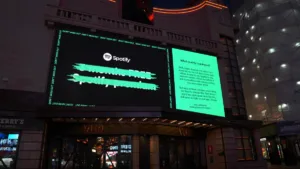By Michael Hudson, CEO and Co-Founder of GameBake
In recent years there has been a growing awareness among developers, publishers and mobile marketers that alternative Android app stores – such as Samsung Galaxy Store and Huawei App Gallery – are a considerable opportunity to reach valuable global audiences that often cannot be found on Google Play and iOS.
In 2021, Apple’s deprecation of its identifier for advertisers (IDFA) accelerated this trend to the point that hypercasual mobile games’ ad spend was higher on Android than iOS for the very first time. Of course, a large proportion of this budget went to Google Play, but experimentation with alternative stores also reached an unprecedented level.
This shift is part of a growing reticence on the part of major smartphone manufacturers to continue playing second fiddle to Google Play on their own devices. Several are increasingly prioritising the development of their own app ecosystems, and this decentralisation trend has also boosted independent global stores such as Uptodown and TapTap.
While alternative Android stores are certainly gaining traction, their content libraries and monetisation infrastructure still lag behind the vast oiled machines of Google Play and the Apple AppStore. The upshot of this is that most major publishers and adtech firms are keeping a watching brief, unwilling to make the first substantive move into a new ecosystem, begging the question: which will come first, the content or the monetisation tools?
Why are big players still on the sidelines?
To reach the next phase of growth, these stores need more content and they need effective ways to monetise it. However, many leading game and app publishers aren’t yet convinced that alternative stores are lucrative enough to justify distributing their content to them. It’s not so much that the audiences of alternative app stores are small – Huawei alone has over 700 million users in its global ecosystem – it’s that in many cases publishers have limited revenue sources available to them. In particular, alternative stores’ advertising ecosystems are much more basic than the main two app stores’, and where they operate in-built payments infrastructure this can require unfamiliar technical integrations for publishers.
Without top drawer content from the world’s biggest publishers to encourage users to spend money, other ad networks, demand side platforms (DSPs) and supply side platforms (SSPs) haven’t typically prioritised alternative stores.
This lack of depth is a problem because games and apps rely on different sources of user traffic to monetise effectively. To give a concrete example, a popular game distributed by GameBake to a major alternative store experienced a seasonal revenue drop of nearly three-quarters (75%) over the last Christmas period. The game, which is also on iOS and Google Play, would typically expect to see a seasonal revenue drop of just 10-15% on those platforms, which have multiple sources of user traffic and revenue built in.
Strong shoots of change
This is slowly changing. For example, AdMob is available on Samsung Galaxy Store, and it’s likely that other networks are already running tests with alternative stores. While they need to continue expanding their advertising offerings, Samsung and Huawei do already enable effective monetisation with in-app purchases (IAPs). And this relative lack of competition does provide a nice opportunity for publishers: by getting in early they can secure far lower costs for installs and impressions that stand them in very good stead as these ecosystems scale with further monetisation tools.
While it’s certainly true that alternative Android stores can be a route to hard-to-reach eastern markets, a little known fact is that some offer direct access to ‘premium’ western users too. More than 10% of AppGallery’s audience is in Europe – upwards of 70 million people – with the company looking to grow its proposition for western Europe in particular.
And while IAPs don’t yet exist on many independent stores like Aptoide, Uptodown and TapTap due to lack of proprietary payments infrastructure, this will also change as they scale. Even so, premium content is already making its way to these stores. Garena Free Fire, for example, was the most downloaded game in December 2021, with 24 million downloads across iOS and Google Play combined. The same game features prominently on Aptoide where it has accrued over 56 million lifetime downloads – a valuable additional audience for its publisher, Garena.
Creating a virtuous cycle
For these green shoots to grow into tall oaks, alternative stores need to demonstrate continued user growth and, crucially, spend in their ecosystems.
Giant publishers need to be convinced that the infrastructure is in place to make their apps and games not only be marginally profitable, but ensure strong return on investment. The only alternative is putting the cart before the horse and paying out of pocket to secure major IPs. Leading adtech players also need to see more evidence that there’s sufficient spend churning through content on alternative stores, although signs are certainly positive on this front.
Top content will attract the leading adtech infrastructure. And effective monetisation tools will act as a magnet for content, creating a virtuous cycle of growth around alternative app stores’ large, engaged audiences. As with the age-old chicken and egg conundrum, it doesn’t particularly matter which comes first, just that they do.
As this happens and the upward trajectory of alternative stores continues to rise, it’s not unrealistic to predict that they could account for around a quarter of the global market by 2025.









